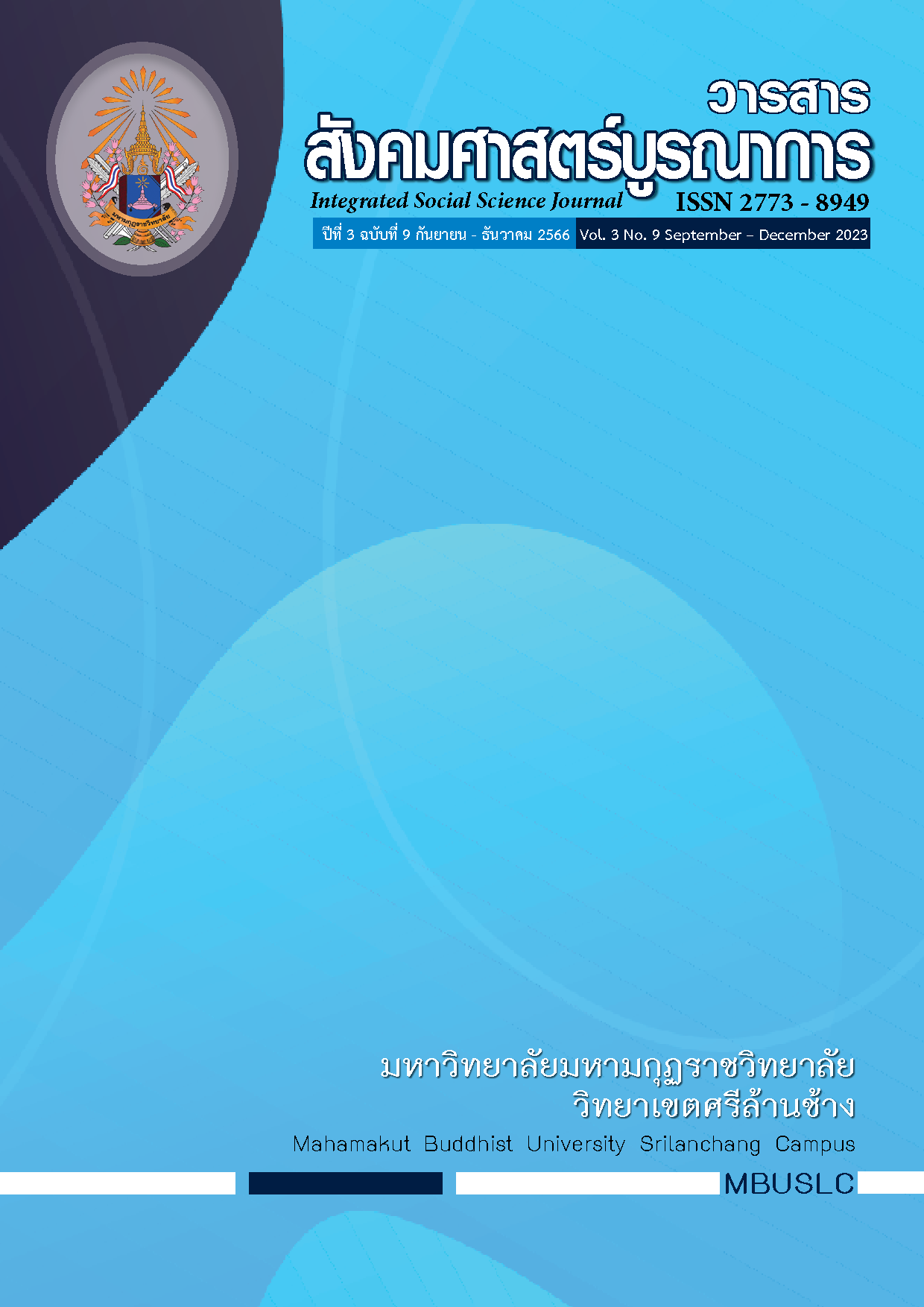ARAHANTSHIP ATTAINMENT OF MAHAPAJAPATI GOTAMI IN GOTAMI SUTTA AND VIMUTTI SUTTA
Main Article Content
Abstract
The objective of the academic article were to study the autobiography of Queen Pajāpati Gotami before and after her ordination in Duakkhiṇavibhaṅga Sutta, to study the Buddha’s teachings on attainment in Vimutti Sutta, and to study the attainment steps of Bhikkhuṇi Pajāpati Gotami in Gotami Sutta. The study was conducted by the documentary research methodology and the descriptive analytics. The research result revealed that the attainment of Bhikkhuṇi Pajāpati Gotami in Gotami Sutta and Vimutti Sutta was a natural process, dependent upon the concentration (Samadhi), including observation to reach mental and intellectual development. Gotami Sutta was aimed at revising the value of the second rebirth, referred to the Buddhist rebirth that was a significant condition for the attainment in Buddhism. Vimutti Sutta was stressed upon observation and analysis of thoughts and mental feelings to comprehend and attain the nature in reality. The attainment like this assisted the practitioner exercise mental development, and stable among challenging surroundings. The revision of what was learned from concentration and observation assisted the practitioner understand the reality and find mental tranquility. As regards, the attainment of Bhikkhuṇi Pajāpati Gotami in Gatami Sutta and Vimutti Sutta was depended upon mental and intellectual concentration as a result from the natural self-training. Gotami Sutta made the trainee experience patience and realization; Vimutti Sutta, focusing on observation and analysis of thoughts and mental feelings, made him/her penetrate in the natural reality at the profound level, and keep more and more peaceful in his/her own daily life. Both Suttas helped the practitioner more stable against the environment and the living life. In summary, the people following such a mental development way like Bhikkhuṇi Pajāpati Gotami had got more opportunities to access Arahantship in Buddhism at a faster level because the mental tranquility and the reality comprehension would assist the trainee to enter the truth in Buddhism.
Article Details

This work is licensed under a Creative Commons Attribution-NonCommercial-NoDerivatives 4.0 International License.
บทความที่ได้รับการพิจารณาจากคณะกรรมการผู้ทรงคุณวุฒิและเผยแผ่ในวารสารฉบับนี้ เป็นทัศนคติและข้อคิดเห็นส่วนบุคคลของผู้เขียนแต่ละท่าน ไม่ถือว่าเป็นทัศนะคติและความรับผิดชอบ
ของบรรณาธิการ
บทความ ข้อมูล เนื้อหา รูปภาพ ฯลฯ ที่ได้รับการตีพิมพ์ในวารสารสังคมศาสตร์บูรณาการ ถือเป็นลิขสิทธิ์ของวารสารสังคมศาสตร์บูรณาการ หากบุคคลหรือหน่วยงานใดต้องการนำทั้งหมดหรือส่วนหนึ่งส่วนใดไปเผยแพร่ต่อหรือเพื่อกระทำการใด ๆ จะต้องได้รับอนุญาตเป็นลายลักอักษรจากวารสารสังคมศาสตร์บูรณาการ ก่อนเท่านั้น
References
กรมการศาสนา. (2525 ก). พระไตรปิฎกภาษาไทย ฉบับหลวง เล่มที่ 22 พระสุตตันตปิฎก เล่ม 14 อังคุตตรนิกาย ปัญจก-ฉักกนิบาต. พิมพ์ครั้งที่ 4. กรุงเทพมหานคร: กระทรวงศึกษาธิการ
กรมการศาสนา. (2525 ข). พระไตรปิฎกภาษาไทย ฉบับหลวง เล่ม 23 พระสุตตันตปิฎก เล่ม 15 อังคุตตรนิกาย สัตตก-อัฏฐก-นวกนิบาต. พิมพ์ครั้งที่ 4. กรุงเทพมหานคร: กระทรวงศึกษาธิการ
พระพรหมคุณาภรณ์ (ป.อ.ปยุตโต). (2551). พจนานุกรมพุทธศาสน์ ฉบับประมวลศัพท์. พิมพ์ครั้งที่ 12. กรุงเทพฯ: โรงพิมพ์มหาจุฬาลงกรณราชวิทยาลัย
พระประสาน ชยาภิรโต. (อร่ามวาณิชย์). (2563). กระบวนการบรรลุธรรมของพุทธสาวิกาในพุทธปรัชญาเถรวาท. พิมพ์ครั้งที่ 1. นครปฐม: โรงพิมพ์มูลนิธิมหาวิทยาลัยมหามกุฏ ราชวิทยาลัย.
พรทิพย์ พรมชาติ. (2564). ศึกษาเชิงเปรียบเทียบการบรรลุธรรมในพระพุทธศาสนาเถรวาทกับการบรรลุธรรมแบบฉับพลันในคำสอนของพระโพธิธรรม. พิมพ์ครั้งที่ 1. พระนครศรีอยุธยา: โรงพิมพ์มหาวิทยาลัยมหาจุฬาลงกรณราชวิทยาลัย
นายดุษฎี สุนทร. (2561). การบำเพ็ญบารมีและการบรรลุธรรมของพระมหากัจจายนเถระ. พิมพ์ครั้งที่ 1. พระนครศรีอยุธยา: โรงพิมพ์มหาวิทยาลัยมหาจุฬาลงกรณราชวิทยาลัย
พระมนตรี อนามโย (สกุลประสิทธิ์). (2563). ประโยชน์การบรรลุธรรมของพุทธสาวกฝ่ายคฤหัสถ์. พิมพ์ครั้งที่ 1. นครปฐม: โรงพิมพ์มูลนิธิมหาวิทยาลัยมหามกุฏราชวิทยาลัย

